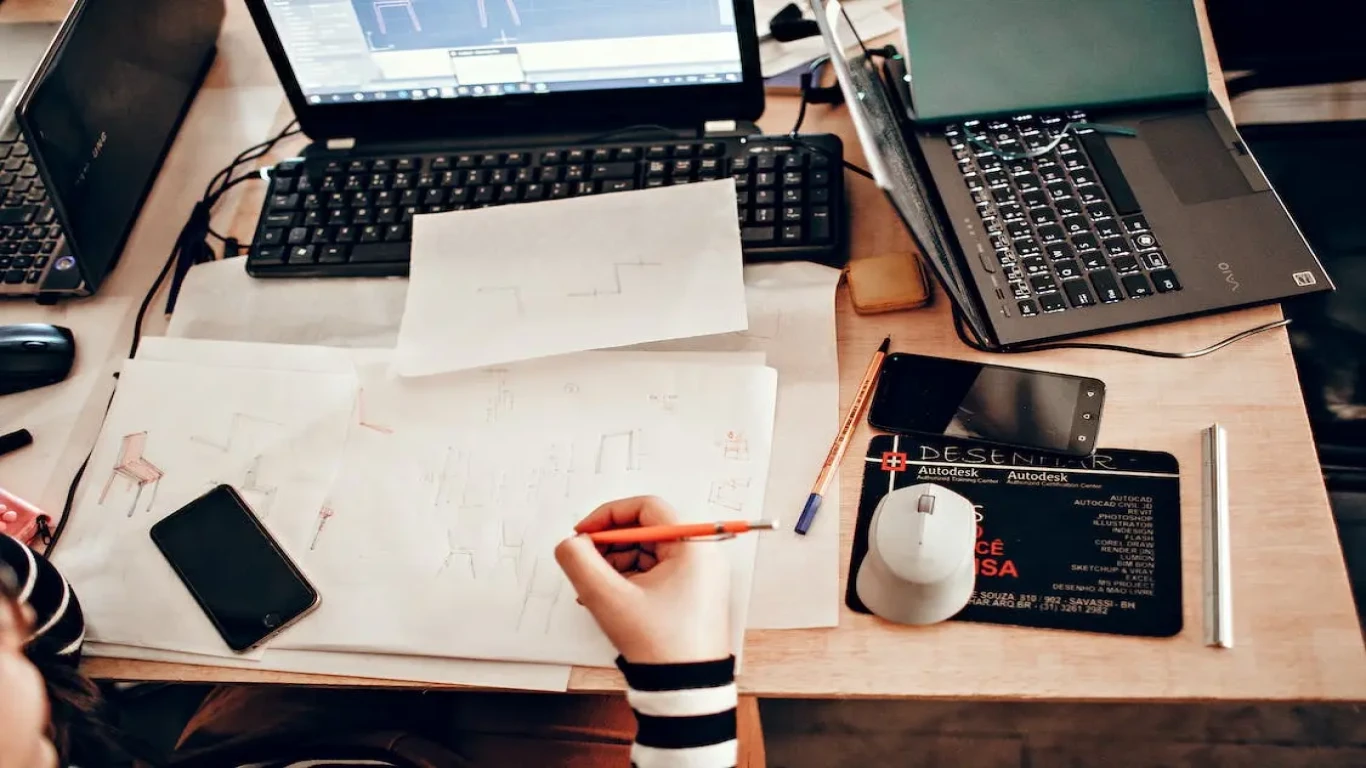How to Create a Photo Retouching Workflow: A Comprehensive Guide
by Delwar Hussain / Last Update: September 18, 2023
Are you tired of spending hours upon hours retouching your photos, only to realize that you’ve barely scratched the surface of what’s possible? Do you ever wonder how professional photographers can create such breathtaking images in a fraction of the time it takes you? The secret lies in having a photo retouching workflow that is both efficient and effective.
In this comprehensive guide, we’ll walk you through everything you need to know to create your own photo retouching workflow. From the essential tools needed to the advanced techniques used by professionals, we’ve got you covered. You’ll learn how to organize your files, choose the right photos, and set goals and expectations for each project. We’ll also cover basic, advanced, and specialized retouching techniques that will take your photos to the next level.
But that’s not all. We’ll also share time-saving tips, such as how to batch edit photos and use presets, as well as techniques for maintaining a consistent workflow, including backing up files and evaluating the success of a project. By the end of this guide, you’ll have everything you need to master the art of photo retouching and create stunning images that will leave your audience in awe. So, let’s get started!
Preparing for Photo Retouching Workflow
Before you dive headfirst into photo retouching, it’s important to take some time to prepare. This means organizing your files and folders, choosing the right photos for retouching, and setting goals and expectations for each project.
First and foremost, organizing your files and folders will save you countless hours in the long run. Create a system that works for you, whether it’s organizing by date, event, or client. This will make it easy to find the photos you need when you need them, without having to sort through a cluttered mess.
Next, it’s important to choose the right photos for retouching. Not all photos are created equal, and some may require more work than others. Look for photos that have potential but need some fine-tuning, rather than trying to fix a photo that is beyond repair. Additionally, consider the purpose of the photo and the audience you’re targeting. This will help you determine the level of retouching needed to achieve your desired outcome.
Lastly, setting goals and expectations for each project will help you stay focused and motivated. Decide what you want to achieve with each photo and create a plan to get there. This could include deciding on the level of retouching needed, the style and tone of the photo, and any specific edits that need to be made. By having a clear plan in place, you’ll be able to work more efficiently and effectively, and produce better results.
Basic Photo Retouching Techniques
When it comes to photo retouching, there are some basic techniques that every photographer should know. These techniques will help you correct common issues in your photos and make them look more polished and professional.
First on the list is color correction and white balance. This is essential for achieving accurate colors in your photos. Adjusting the temperature and tint can make a huge difference in the overall look of your photo.
Next, the crop and straighten tool is a quick and easy way to improve the composition of your photos. It can help you remove distractions and create a more balanced image.
Retouching skin and blemishes is also an important basic technique. Whether you’re retouching portraits or product photos, removing imperfections such as acne or wrinkles can make a big difference in the final result.
Finally, removing unwanted objects and distractions can help you create a cleaner and more focused image. This could include removing power lines, trash cans, or other distractions that take away from the main subject of your photo.
By mastering these basic photo retouching techniques, you’ll be able to quickly and easily improve the quality of your photos and set a strong foundation for more advanced retouching techniques.
Advanced Photo Retouching Techniques
Once you’ve mastered the basics of photo retouching, it’s time to move on to more advanced techniques. These techniques can take your photos to the next level and help you achieve a more professional and polished look.
First on the list is frequency separation. This technique separates the texture of an image from its tone, allowing you to retouch specific areas without affecting the overall texture of the image. This can be useful for retouching skin and hair, or for creating a more dramatic effect in your photos.
Another advanced technique is dodging and burning. This involves selectively lightening and darkening areas of your photo to create a more dynamic and dramatic image. This technique can be used to add depth and dimension to your photos, or to draw attention to specific areas.
The liquify tool is another powerful tool for advanced photo retouching. This tool allows you to reshape and manipulate specific areas of your photo, such as adjusting the shape of a subject’s face or clothing. It can be a useful tool for making subtle adjustments that can have a big impact on the overall look of your photo.
Finally, the clone stamp tool can be used for more advanced retouching tasks, such as removing large objects or filling in areas of your photo. With practice, you can use this tool to make complex edits that seamlessly blend into the surrounding areas of your photo.
By mastering these advanced photo retouching techniques, you’ll be able to take your photos to the next level and achieve a professional and polished look that sets you apart from the competition.
Specialized Photo Retouching Techniques
In addition to basic and advanced photo retouching techniques, there are also specialized techniques that can be used for specific types of photos or retouching tasks.
One such technique is product retouching. This involves removing any imperfections or distractions from product photos, such as dust or scratches, and creating a consistent and polished look across all photos. This can be a time-consuming process, but it’s essential for creating high-quality product photos that accurately represent your brand.
Another specialized technique is beauty retouching. This involves retouching skin and hair in portraits to create a flawless and natural look. This can be a complex process that involves a combination of basic and advanced retouching techniques, such as frequency separation and dodging and burning.
For landscape and architectural photography, specialized techniques such as HDR (High Dynamic Range) can be used to capture a wider range of colors and tones in your photos. This can be especially useful for capturing scenes with high contrast, such as a sunrise or sunset. Read more: How to Retouch Landscape Photos: A Deep Down Guide
Finally, for photo restoration, specialized techniques such as colorization can be used to bring old or damaged photos back to life. This involves adding color to black and white photos or adjusting the colors in faded photos to restore them to their original state.
By understanding these specialized photo retouching techniques, you’ll be able to take on a wider range of projects and deliver high-quality results for your clients.
Time-Saving Tips for Photo Retouching Workflows
Photo retouching can be a time-consuming process, but there are several tips and tricks that can help you streamline your workflow and save time.
First on the list is using batch processing. This allows you to apply the same adjustments to multiple photos at once, saving you time and effort. Batch processing can be especially useful for correcting common issues such as exposure or color balance.
Another time-saving tip is to use presets. Presets allow you to save specific adjustments and apply them to other photos with just a few clicks. This can be a huge time-saver for common adjustments such as color correction or sharpening.
Using keyboard shortcuts can also save you time when working on your photos. By memorizing common shortcuts for tools and adjustments, you can speed up your workflow and avoid having to constantly switch between your mouse and keyboard.
Finally, organizing your files and folders can also save you time when working on your photos. By keeping your files organized and easily accessible, you can quickly find the photos you need and avoid wasting time searching for them.
By incorporating these time-saving tips into your photo retouching workflow, you’ll be able to work more efficiently and deliver high-quality results to your clients in less time.
Maintaining a Consistent Photo Retouching Workflow
Consistency is key when it comes to photo retouching. A consistent workflow not only helps you stay organized and efficient, but it also ensures that your photos have a consistent look and feel across all your projects.
To maintain a consistent photo retouching workflow, start by establishing a set of guidelines and standards for your retouching process. This can include guidelines for color correction, skin retouching, and other common adjustments. By setting these standards upfront, you’ll be able to ensure that all your photos have a consistent look and feel.
Next, create a checklist or workflow chart that outlines your retouching process step-by-step. This can help you stay organized and ensure that you don’t miss any important steps in the retouching process.
Using templates and presets can also help you maintain consistency in your photo retouching workflow. By creating templates and presets for common adjustments and applying them consistently across all your projects, you’ll be able to ensure that your photos have a consistent look and feel.
Finally, it’s important to regularly review and adjust your workflow as needed. As you work on more projects and encounter new challenges, you may find that certain steps in your workflow need to be adjusted or updated. By regularly reviewing and adjusting your workflow, you’ll be able to ensure that your process remains efficient and effective over time.
By maintaining a consistent photo retouching workflow, you’ll be able to deliver high-quality results to your clients and establish a strong reputation in the industry.
Key Takeaways
- Creating a photo retouching workflow requires careful planning and organization to ensure consistent and efficient results.
- Preparing for photo retouching involves properly setting up your workspace, selecting the right tools and software, and organizing your files and folders.
- Basic photo retouching techniques include adjusting exposure, color correction, and skin retouching, among others. These techniques require a solid understanding of the tools and software you are using.
- Advanced photo retouching techniques, such as compositing and retouching complex textures, require more specialized knowledge and skill.
- Specialized photo retouching techniques include retouching for product photography, architectural photography, and portrait photography, among others. These techniques require a deep understanding of the specific needs and challenges of each type of photography.
- Time-saving tips for photo retouching workflows include using batch processing, presets, keyboard shortcuts, and organizing files and folders.
- Maintaining a consistent photo retouching workflow involves establishing guidelines and standards, creating a step-by-step workflow chart, using templates and presets, and regularly reviewing and adjusting your process as needed.
Overall, a successful photo retouching workflow requires a combination of technical skill, organization, and attention to detail. By implementing these tips and techniques, you can streamline your process, save time, and deliver high-quality results to your clients.
Recommend Reading
Article by
Delwar Hussain
Image Processing Expert, Photography Enthusiast, Blogger, COO at Cutting Edger
Over 18 years of experience in Graphic Design, Image Editing, 3D Modeling/Rendering and Digital Products, I have got opportunity to work with different local and multi-national companies, among of them GraphicPeople, Modern Herbal Group and British Broad Casting (BBC) can be highlighted. During my career I have worked with Coca-Cola, Turkish Airlines, Singapore British American Tobacco, Dell, Pfizer Pharmaceuticals, Indeed.com, International Hotel Group (IHG), Santander Bank, Quad Inc. Adidas, Nike, Dove etc. Having 18 years of experience and being a Co-Founder and COO of Cutting Edger is providing Post Production Image Editing, 3D Modeling and Rendering, Desktop Publishing and Digital Products like Web Design and Development, Software Development, etc.

